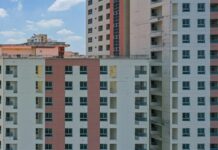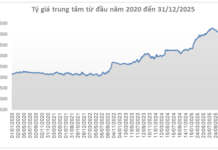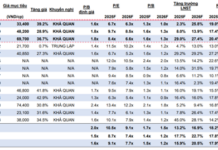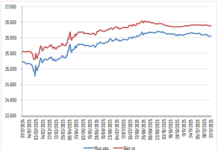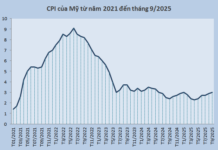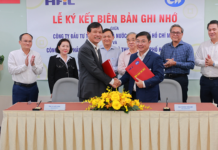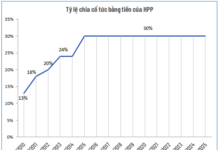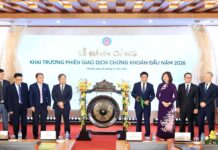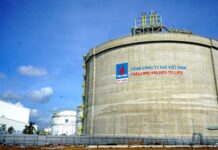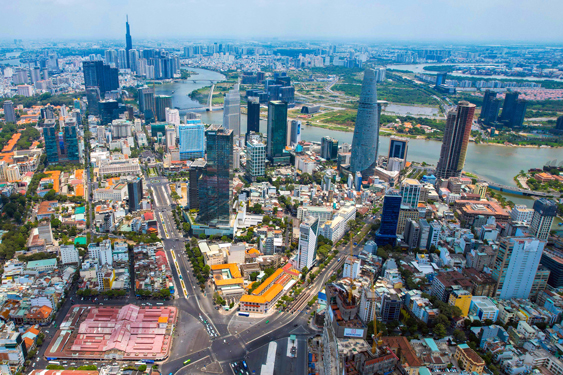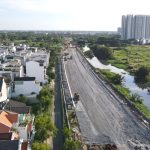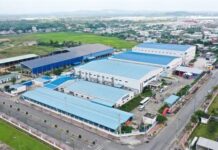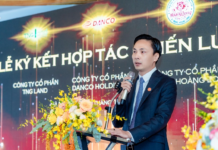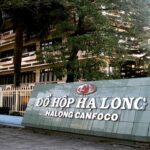The People’s Committee of Ho Chi Minh City has submitted a proposal to the Ministry of Construction regarding the adjusted master plan for the city’s development towards 2040, with a vision extending to 2060, for appraisal and submission to the Prime Minister for approval.
Convergence of Strength
According to the proposal, the scope of the planning boundary covers the entire administrative boundary of Ho Chi Minh City, with a total area of approximately 2,123 sq. km. This includes the existing administrative area of over 2,095 sq. km and the coastal area of Can Gio. The planning period is divided into two phases: the first phase up to 2030, and the long-term phase up to 2040, with a vision towards 2060.

Ho Chi Minh City aims to become a global city, known for its civility, modernity, and vibrant culture. Image: HOANG TRIEU
Ho Chi Minh City is envisioned to become a global city, renowned for its civility, modernity, and vibrant culture. The city aims to match the development of major cities worldwide and emerge as a leading economic, financial, and service hub in Asia. Additionally, it will be a center for cultural excellence, offering its residents a high quality of life. Ho Chi Minh City will serve as the nucleus of the Southeast region and a growth pole for the entire country.
The master plan outlines a development direction that converges strengths. Firstly, it focuses on converging the strengths of nature, fostering sustainable and resilient growth. The urban landscape will be centered around ecological scenery, harnessing the power of nature as the foundation for progress.
Secondly, it aims to converge talent and resources. Alongside crafting a bustling and unique metropolis, an attractive destination and living environment, the city will provide living and working spaces for highly skilled workers and entrepreneurs. It will also host multiple modern production and business centers, seamlessly connected to the region’s transportation network and international gateways.
In terms of economic convergence, Ho Chi Minh City will become a hub for international trade and creative economy, agilely seizing opportunities. This involves directly connecting the city’s production and business zones to strategic international logistics locations, tightly linking with global supply chains, and restructuring industrial land in the inner city to embrace opportunities for economic transformation towards higher value.
Multi-Centered City with 5 Urban Regions
As per the proposal, Ho Chi Minh City will develop following a multi-centered urban model, integrating diverse ecological spaces. This includes a central urban division and four additional urban divisions: East, West, South, and North. The city will harness and radiate developmental momentum through the Saigon River, ten cross-city axes, three belts, and the coastal economic corridor, while also connecting to national and international transportation networks.
Each urban region will be multi-functional, capable of meeting the demands for high-quality jobs and living environments for a significant portion of the population. They will play pivotal roles at the regional, national, and international levels. Urban development will be concentrated around public transportation; from production and business centers, connections to seaports, airports, and mangrove forests can be made within 15-20 minutes.
Specifically, the central urban division is bounded by the Saigon River, National Highway 1, Kênh Đôi, and Kênh Tẻ. Its primary characteristics include administration, foreign affairs, commerce, services, knowledge economy, and creative urban initiatives. The projected population for this division by 2040 is approximately 4.3 million.
The Eastern urban division, comprising Thu Duc City, emphasizes functions such as creative urbanism, education, high-tech industries, financial services, healthcare, and eco-tourism. The international financial center is envisioned to be established in the Thu Thiem area. The expected population by 2040 is around 2.2 million.
The Northern urban division includes areas north of National Highway 1 in District 12, Hoc Mon, and Cu Chi. Its key functions encompass entertainment services, cultural activities, recreational facilities, healthcare services, eco-environmental services, and agriculture (including landscape, organic, high-quality, and high-tech agriculture), industries, education, and eco-cultural-historical tourism. The projected population for this division by 2040 is approximately 4.5 million.
The Western urban division comprises areas east of National Highway 1 in Binh Tan District, northern and central areas of Binh Chanh District, and regions west of the Can Giuoc River. Its primary functions include industrial and commercial services, technological and healthcare services, a center for biochemical pharmaceuticals, and educational institutions. The expected population by 2040 is around 2.4 million.
The Southern urban division consists of areas south of Kênh Đôi in District 8, regions east of the Can Giuoc River in Binh Chanh and House 7 Districts, as well as Nha Be and Can Gio. This division assumes roles such as high-tech urbanism, aquatic ecology, knowledge economy, cultural arts, exhibitions, fairs, entertainment, eco-tourism, industries, logistics, and a coastal economic center. The projected population for this division by 2040 is approximately 3.1 million.
“In terms of housing development, Ho Chi Minh City prioritizes affordable housing options that are within the financial reach of a large portion of the population, including social housing. The proportion of middle-income housing and social housing is guaranteed to be at least 60% of the total number of apartments in new construction projects and urban redevelopment initiatives.”
According to the proposal, Ho Chi Minh City aims to develop specialized healthcare systems in three clusters. These include a specialized healthcare cluster in the central area of the city, one in Tan Kien, Binh Chanh, and one in Thu Duc. Each cluster will integrate high-quality medical universities, university hospitals, and multi-disciplinary hospitals that meet regional standards in terms of both quality and technical expertise.
In addition to these specialized healthcare clusters, Ho Chi Minh City will establish comprehensive hospitals and specialized clinics to serve the respective residential clusters.
Comprehensive regional connectivity
In addition to building strong physical infrastructure, Ho Chi Minh City needs to strengthen its soft connections with other provinces in the region in order to promote economic development. This includes prioritizing the training of skilled workforce and ensuring access to quality healthcare.






